You don't have to run a Jersey app in an installed web server. You can run it in an embedded server, meaning a server that runs in standalone mode with a normal main method.
If you are using Maven, and you are familiar with creating Maven archetypes, you can use the jersey-quickstart-grizzly2 archetype
This is everything you get for free with the archetype project.

Main.java
package com.underdog.jersey.grizzly;
import org.glassfish.grizzly.http.server.HttpServer;
import org.glassfish.jersey.grizzly2.httpserver.GrizzlyHttpServerFactory;
import org.glassfish.jersey.server.ResourceConfig;
import java.io.IOException;
import java.net.URI;
/**
* Main class.
*
*/
public class Main {
// Base URI the Grizzly HTTP server will listen on
public static final String BASE_URI = "http://localhost:8080/myapp/";
/**
* Starts Grizzly HTTP server exposing JAX-RS resources defined in this application.
* @return Grizzly HTTP server.
*/
public static HttpServer startServer() {
// create a resource config that scans for JAX-RS resources and providers
// in com.underdog.jersey.grizzly package
final ResourceConfig rc = new ResourceConfig().packages("com.underdog.jersey.grizzly");
// create and start a new instance of grizzly http server
// exposing the Jersey application at BASE_URI
return GrizzlyHttpServerFactory.createHttpServer(URI.create(BASE_URI), rc);
}
/**
* Main method.
* @param args
* @throws IOException
*/
public static void main(String[] args) throws IOException {
final HttpServer server = startServer();
System.out.println(String.format("Jersey app started with WADL available at "
+ "%sapplication.wadl\nHit enter to stop it...", BASE_URI));
System.in.read();
server.stop();
}
}
MyResource.java
package com.underdog.jersey.grizzly;
import javax.ws.rs.GET;
import javax.ws.rs.Path;
import javax.ws.rs.Produces;
import javax.ws.rs.core.MediaType;
/**
* Root resource (exposed at "myresource" path)
*/
@Path("myresource")
public class MyResource {
/**
* Method handling HTTP GET requests. The returned object will be sent
* to the client as "text/plain" media type.
*
* @return String that will be returned as a text/plain response.
*/
@GET
@Produces(MediaType.TEXT_PLAIN)
public String getIt() {
return "Got it!";
}
}
MyResourceTest.java
package com.underdog.jersey.grizzly;
import javax.ws.rs.client.Client;
import javax.ws.rs.client.ClientBuilder;
import javax.ws.rs.client.WebTarget;
import org.glassfish.grizzly.http.server.HttpServer;
import org.junit.After;
import org.junit.Before;
import org.junit.Test;
import static org.junit.Assert.assertEquals;
public class MyResourceTest {
private HttpServer server;
private WebTarget target;
@Before
public void setUp() throws Exception {
// start the server
server = Main.startServer();
// create the client
Client c = ClientBuilder.newClient();
// uncomment the following line if you want to enable
// support for JSON in the client (you also have to uncomment
// dependency on jersey-media-json module in pom.xml and Main.startServer())
// --
// c.configuration().enable(new org.glassfish.jersey.media.json.JsonJaxbFeature());
target = c.target(Main.BASE_URI);
}
@After
public void tearDown() throws Exception {
server.stop();
}
/**
* Test to see that the message "Got it!" is sent in the response.
*/
@Test
public void testGetIt() {
String responseMsg = target.path("myresource").request().get(String.class);
assertEquals("Got it!", responseMsg);
}
}
pom.xml - I added the jersey-media-json-jackson and the maven-assembly-plugin myself, so that you can create a single runnable jar file.
<project xmlns="http://maven.apache.org/POM/4.0.0" xmlns:xsi="http://www.w3.org/2001/XMLSchema-instance"
xsi:schemaLocation="http://maven.apache.org/POM/4.0.0 http://maven.apache.org/maven-v4_0_0.xsd">
<modelVersion>4.0.0</modelVersion>
<groupId>com.underdog</groupId>
<artifactId>jersey-grizzly</artifactId>
<packaging>jar</packaging>
<version>1.0-SNAPSHOT</version>
<name>jersey-grizzly</name>
<dependencyManagement>
<dependencies>
<dependency>
<groupId>org.glassfish.jersey</groupId>
<artifactId>jersey-bom</artifactId>
<version>${jersey.version}</version>
<type>pom</type>
<scope>import</scope>
</dependency>
</dependencies>
</dependencyManagement>
<dependencies>
<dependency>
<groupId>org.glassfish.jersey.containers</groupId>
<artifactId>jersey-container-grizzly2-http</artifactId>
</dependency>
<dependency>
<groupId>org.glassfish.jersey.media</groupId>
<artifactId>jersey-media-json-jackson</artifactId>
</dependency>
<dependency>
<groupId>junit</groupId>
<artifactId>junit</artifactId>
<version>4.9</version>
<scope>test</scope>
</dependency>
</dependencies>
<build>
<finalName>${project.artifactId}</finalName>
<plugins>
<plugin>
<artifactId>maven-assembly-plugin</artifactId>
<version>2.5.3</version>
<configuration>
<descriptorRefs>
<descriptorRef>jar-with-dependencies</descriptorRef>
</descriptorRefs>
<archive>
<manifest>
<mainClass>com.underdog.jersey.grizzly.Main</mainClass>
</manifest>
</archive>
</configuration>
<executions>
<execution>
<id>create-archive</id>
<phase>package</phase>
<goals>
<goal>single</goal>
</goals>
</execution>
</executions>
</plugin>
<plugin>
<groupId>org.apache.maven.plugins</groupId>
<artifactId>maven-compiler-plugin</artifactId>
<version>2.5.1</version>
<inherited>true</inherited>
<configuration>
<source>1.7</source>
<target>1.7</target>
</configuration>
</plugin>
<plugin>
<groupId>org.codehaus.mojo</groupId>
<artifactId>exec-maven-plugin</artifactId>
<version>1.2.1</version>
<executions>
<execution>
<goals>
<goal>java</goal>
</goals>
</execution>
</executions>
<configuration>
<mainClass>com.underdog.jersey.grizzly.Main</mainClass>
</configuration>
</plugin>
</plugins>
</build>
<properties>
<jersey.version>2.17</jersey.version>
<project.build.sourceEncoding>UTF-8</project.build.sourceEncoding>
</properties>
</project>
With all the above, you can cd to the project from the command line and do
mvn clean packagejava -jar target/jersey-grizzly-jar-with-dependencies.jar
and the application will start.
You can access it from http://localhost:8080/myapp/myresource
That's it. Note that the above is a normal jar project. So if you can't follow how to create the archetype, you can pretty much copy everything above into a jar project.
See Also:

